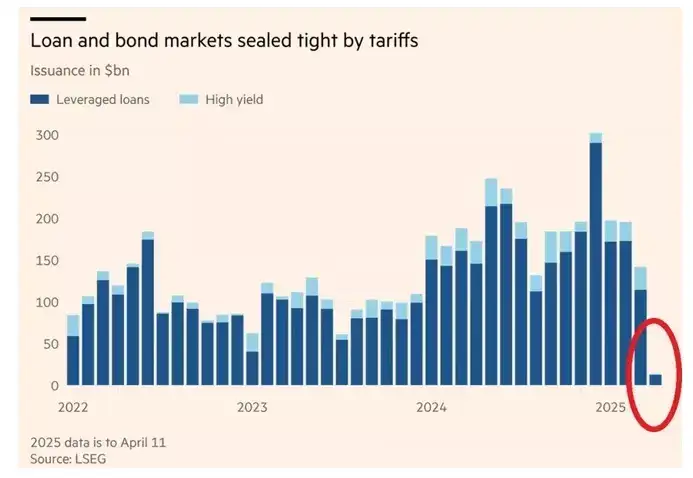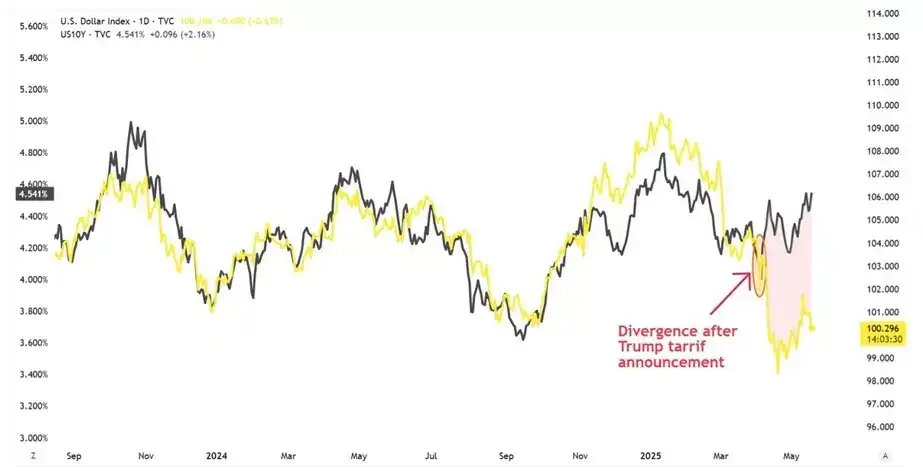- July 4, 2025
- Posted by: Amit Pabari
- Category: Uncategorized
US treasuries: The global benchmark
For decades, US Treasury securities have stood as the cornerstone of global finance, considered risk-free assets, deeply liquid, and a gauge for global investor sentiment.
Movements in US Treasury yields have traditionally signalled shifts in economic momentum, monetary policy direction, and global capital flows.
As yields rose, they typically attracted foreign capital, strengthening the US dollar in tandem.
The historic correlation: Yields up, dollar up
Historically, rising yields reflected economic strength or expectations of monetary tightening, drawing capital inflows and boosting the dollar.
The logic was straightforward: higher returns on dollar-denominated assets attracted global investors, reinforcing demand for both Treasuries and the U.S. dollar.

The 2025 break: A divergence emerges
In 2025, however, this historic relationship has shown divergence. As 10-year Treasury yields surged past 4.60%, while the Dollar Index declined sharply, falling against all major G10 currencies. Usually, when the Yield rises it indicates a strong economic condition.
However, this time, rather than a reflection of strength, the yield surge is now being interpreted as a symptom of stress—signaling investor unease over the United States fiscal health, policy direction, and geopolitical standing.
What led to the divergence?
1. Demand and supply dynamics: Consequently, unchecked government spending is expected to significantly widen the US fiscal deficit. Given the historical tendency for aggressive monetary intervention during economic downturns, both the deficit-to-GDP and debt-to-GDP ratios are poised to climb further. As these fiscal metrics deteriorate, investor concerns over US creditworthiness deepen—prompting demands for higher yields on Treasury securities.
Elevated yields, in turn, raise borrowing costs across the broader economy, affecting everything from mortgages and auto loans to corporate debt. To contain this upward spiral in yields, the Federal Reserve may be compelled to implement Yield Curve Control (YCC)—a strategy involving large-scale purchases of long-term bonds to cap rates.
2. Moody’s downgrade: A structural blow
On May 16, 2025, Moody’s downgraded the U.S. sovereign rating from Aaa to Aa1, following in the footsteps of S&P (2011) and Fitch (2023). The downgrade was not just symbolic—it highlighted:
• A projected federal deficit widening to 9% of GDP by 2035
• A debt-to-GDP ratio expected to exceed 134%
• Interest payments potentially consuming 30% of federal revenues by 2035 (from 18% today)
3. Global repositioning: Japan and China retreat
Japan’s hawkish turn—driven by sticky inflation—has triggered expectations of further rate hikes and a reversal of the yen carry trade. With Japan and China reducing their holdings of U.S. Treasuries, foreign demand for U.S. debt is softening, adding further upward pressure on yields and downward pressure on the dollar.
The Broader impact: From bonds to the real economy
1. Rising Refinancing Costs
More than 55% of U.S. debt—roughly $5.1 trillion—is set to mature before July 2025. Refinancing this debt at elevated yields will dramatically increase interest costs, especially with the fiscal burden already worsened by over $4.5 trillion in tax cuts and sluggish revenue growth.
2. Weak Economic Growth
As borrowing rates rise in tandem with Treasury yields, corporations—especially those with lower credit ratings—have significantly reduced their debt issuance. In April 2025, low-rated U.S. companies issued less than $1 billion in bonds, marking the lowest level in at least four years. High-yield corporate bond and leveraged loan issuances have plunged to nearly one-tenth of what they were during the same period last year.
This sharp decline in corporate borrowing signals reduced investment in expansion and growth initiatives, which in turn weakens revenue prospects. As companies brace for slower earnings, they are likely to cut costs—resulting in job reductions and slower wage growth.
These developments are expected to dampen consumer spending, which remains a key pillar of U.S. economic activity. As a result, the broader economy faces increased risk of stagnation or contraction.

Outlook on DXY and S&P 500
The divergence between surging U.S. Treasury yields and a weakening Dollar Index underscores a deepening crisis of confidence in U.S. fiscal prudence. Despite elevated yields, the dollar is losing ground as investors grow wary of rising deficits, potential monetization of debt, and fading foreign appetite for Treasuries.
Given these factors, the Dollar Index is likely to face strong resistance around the 100.50–101.00 zone. From the current level of 99.70, it may decline towards 97.50 levels.
Simultaneously, the S&P 500 faces growing headwinds from higher refinancing costs, shrinking credit availability, and deteriorating corporate margins. With tighter financial conditions and slowing economic momentum, equities are vulnerable to correction—unless a dovish policy pivot or credible fiscal reform revives investor sentiment.
Given these factors, the S&P 500 is expected to face strong resistance in the 5,950–6,000 range. From current levels, it is likely to decline to 5,540 levels.
Similarly, the DJI is facing resistance around 43,000 and from the current levels is likely to move towards 40,800, with further downside potential towards 40,250.
Amit Pabari is a managing director at CR Forex Pvt Ltd. The views expressed in this article are his personal views.
source: https://encr.pw/E8FDK




